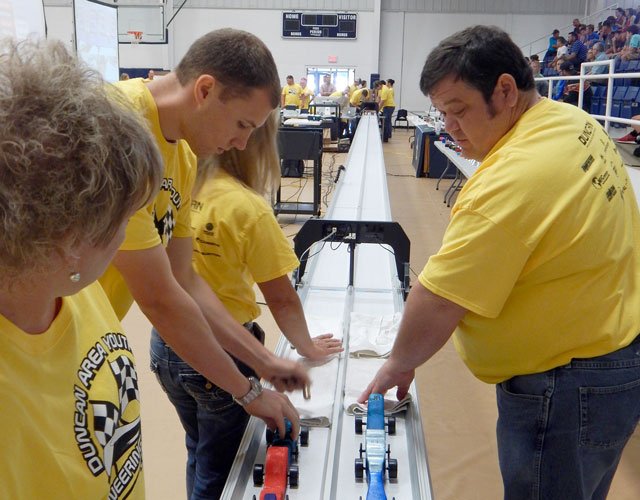Several years ago, I was teaching at a new elementary school and wanted to get my community involved in family fitness events to promote exercising while having fun. I started organizing area families to participate together in local 5k fun runs. Within weeks, I was able to inspire over 25 students and their families to run a 5k together. Participation continued to grow and one particular day after a race, two parents suggested I start a before-school fitness and running club and offered to help me organize it. I was ecstatic my mission of promoting family fitness was taking hold. The fitness and running club that was born out of that mission proved to be a success and provided an opportunity for students to benefit from extended learning outside regular school hours.
If you’re interested in starting a before- or after-school fitness club, here are some helpful ideas and tips to inspire and guide you.
Be prepared for larger participation numbers than anticipated and use technology to help you organize.
Paper letters and permissions slips can create an overwhelming scenario when dealing with multiple grade levels. Communicating via email and electronic sign-up forms can alleviate this. (Some useful tools are Google Forms and SignUpGenius.) Additionally, creating a separate electronic sign-up for each grade level (1st, 2nd, 3rd, etc.) is an efficient way to keep track of and organize groups.
Don’t be afraid to ask parents and volunteers to help.
Invite parents/ teachers/staff to join in the fitness and running activities as well. Fifth grade or older students can also be valuable to you as grade level leaders.
Remind parents and students that attendance isn’t mandatory.
Make sure to communicate that this is an outdoor club and attendance is not required. Depending on your location, weather can change daily so if it is too hot or cold or the conditions are not to participants’ liking they don’t have to come. This can alleviate potential conflicts or complaints as it is strictly the participant’s choice.
Have equipment ready and organized before students arrive.
Useful equipment can include:
- Plenty of cones
- Portable sound system with microphone and Bluetooth capability (students being able to hear you from a distance is vital!)
- Colored woodcraft sticks for an easy-to-use tracking system
- Sportime shoulder folders for signs to designate areas
- Other items for fun fitness challenge pit stops (details below)
Create a schedule but have some flexibility.
Here’s an example schedule you can adjust as needed to fit your club.
- 8:00 a.m. – 8:15 a.m. Meet on the blacktop for attendance, good morning announcements, and group warmup. For the group warmup, have students all find their own space and perform different activities to get them moving. (Here’s where the mobile sound system with microphone comes in handy.)
- 8:15 a.m. – 8:20 a.m. Demo the run course and pit stops. You can use older students to go out and demonstrate the course for the rest of the group. For the run course, set out cones in a pattern (circle, oval, square, etc.) and throughout the course, have 3-5 pit stops for the students to pause at if they want too. (Or, students can choose to run the whole time.) Mark the pit stops with signs. Some examples of pit stops you can use are: hoop station, agility ladder, over/under obstacle course, water/rest break, stretching, and balance activities. The key to pit stops is to make them fun, creative, and give students the ability to catch their breath and offer variety.
- 8:20 a.m. – 8:50 a.m. Start the music and off they go! It’s helpful to start off in waves with the older students first, so younger students knew where to go. As the students are running, things will spread out around your run course. Some students walk, others jog, and many stop at the various pit stops to do the different challenges. Somewhere on your run course, have 2-3 volunteers standing in an area passing out the small colored woodcraft sticks. For every lap the students complete, they receive a stick to keep track.
- 8:50 a.m. – 9:00 a.m. Gather students for closure and cooldown. Complimenting students on deciding to get up early before school and choosing good health can help keep them motivated and encouraged. Talk about the day, celebrate their woodcraft sticks and number of laps, and challenge them to see if they can increase their number by one stick the next time. Additionally, don’t forget to incorporate some light stretching.
- 9:00 a.m. Lots of high fives and off to the school day!
All students can benefit from extended learning, and creating a fitness and running club to provide that opportunity can be easier than you think. Be flexible, be organized, be creative, and, most importantly, have fun. Know that you are making a huge impact on the health of your students and community to extend learning in a fun and beneficial way.
